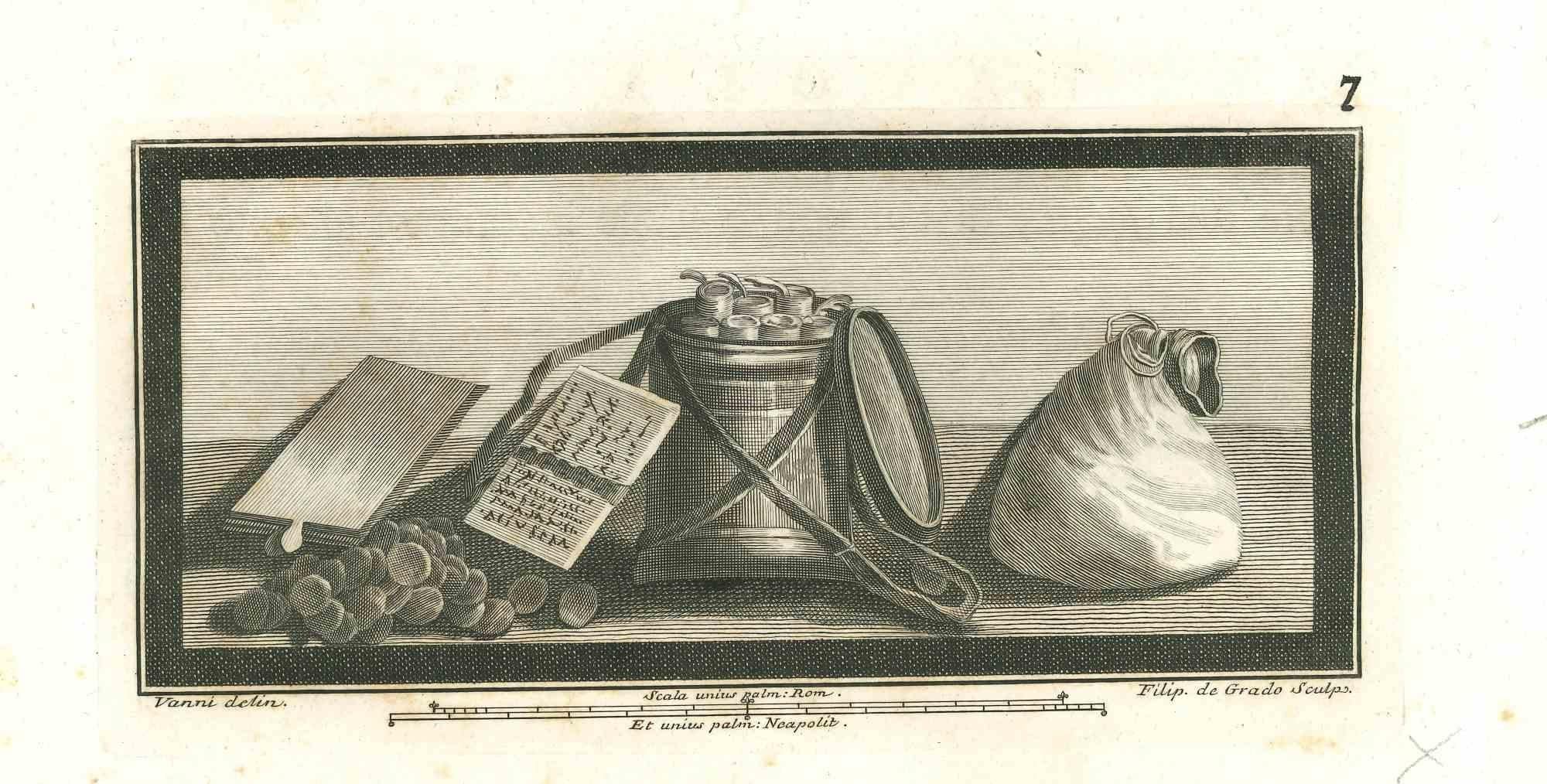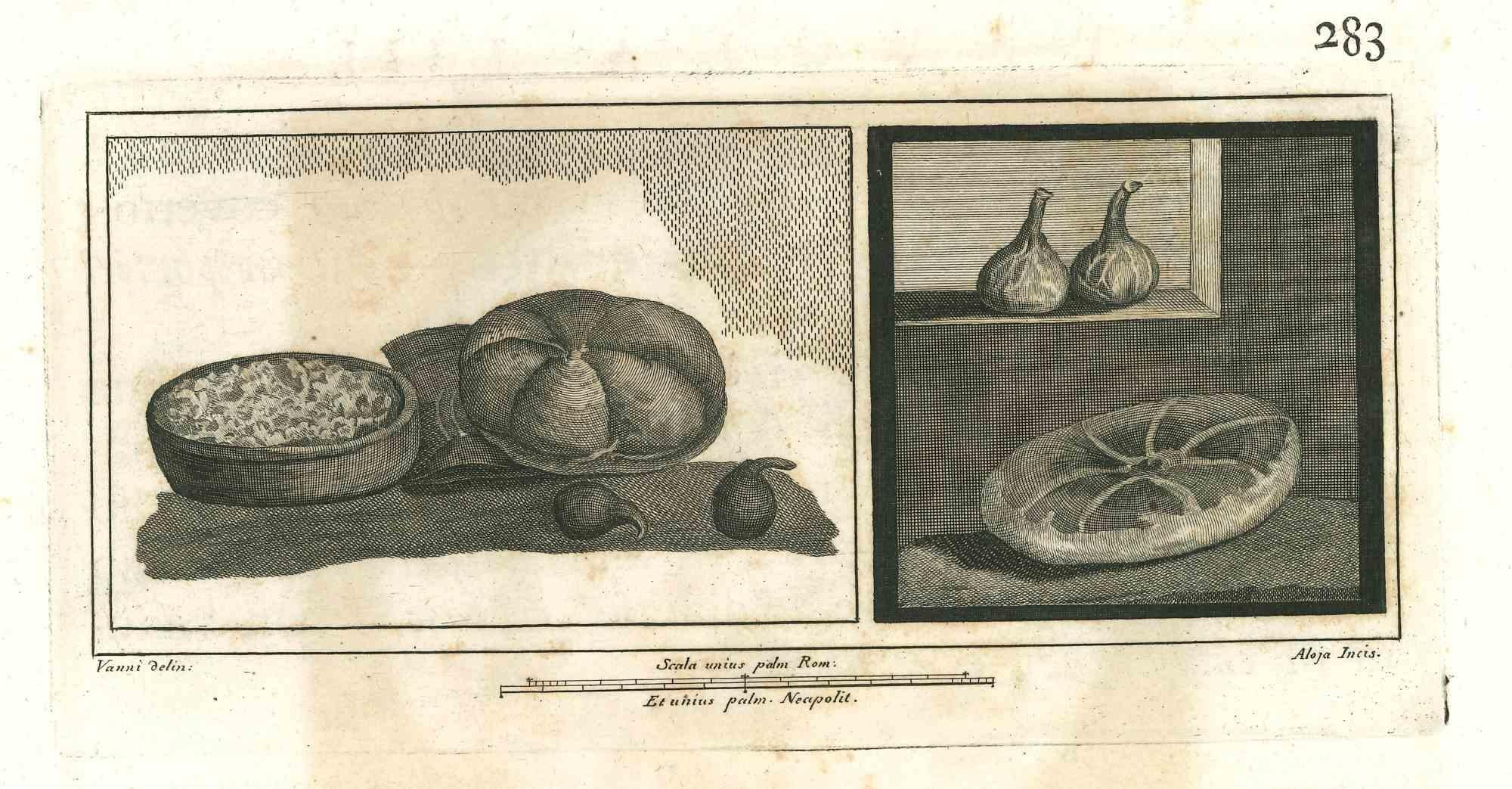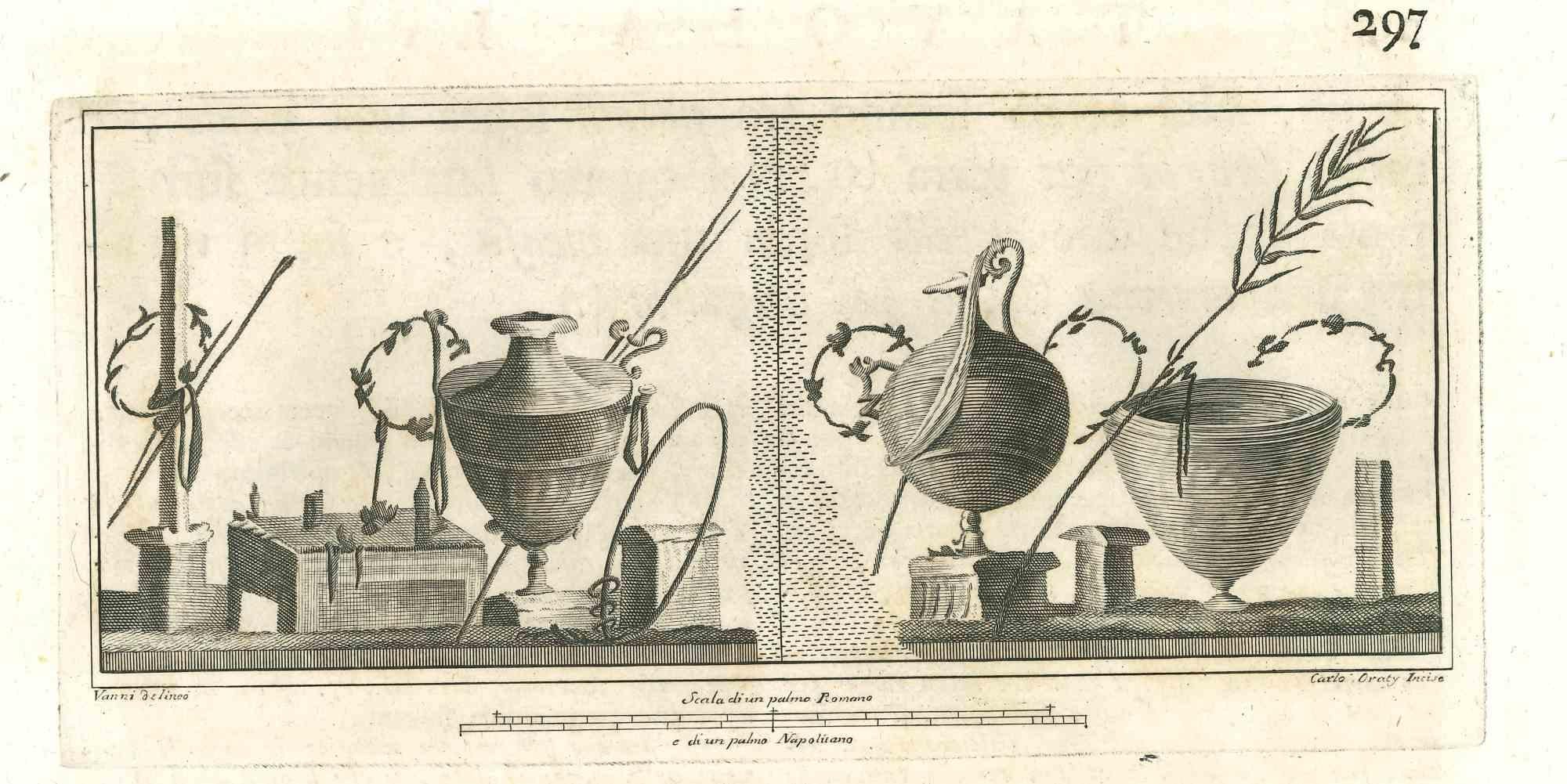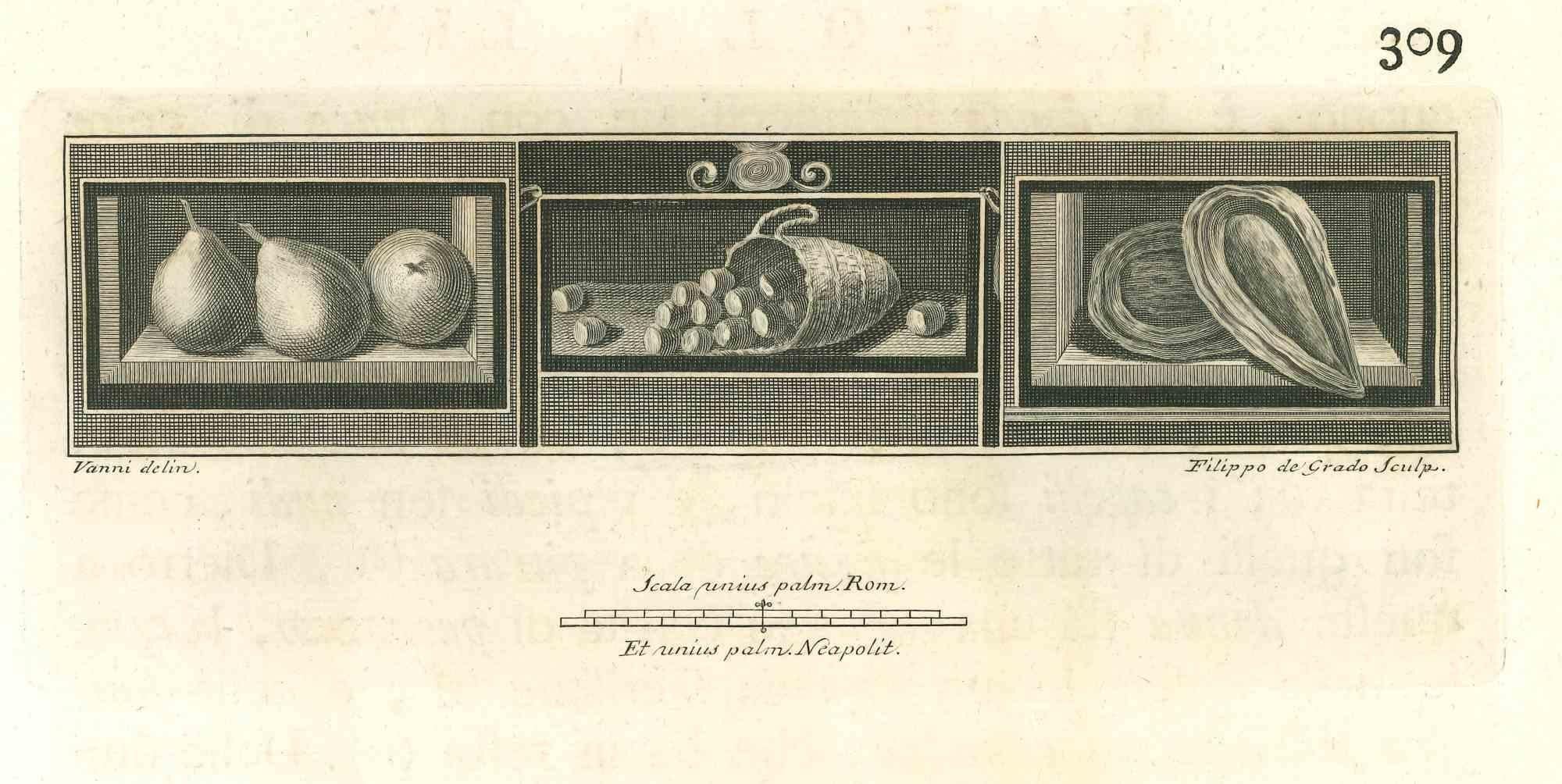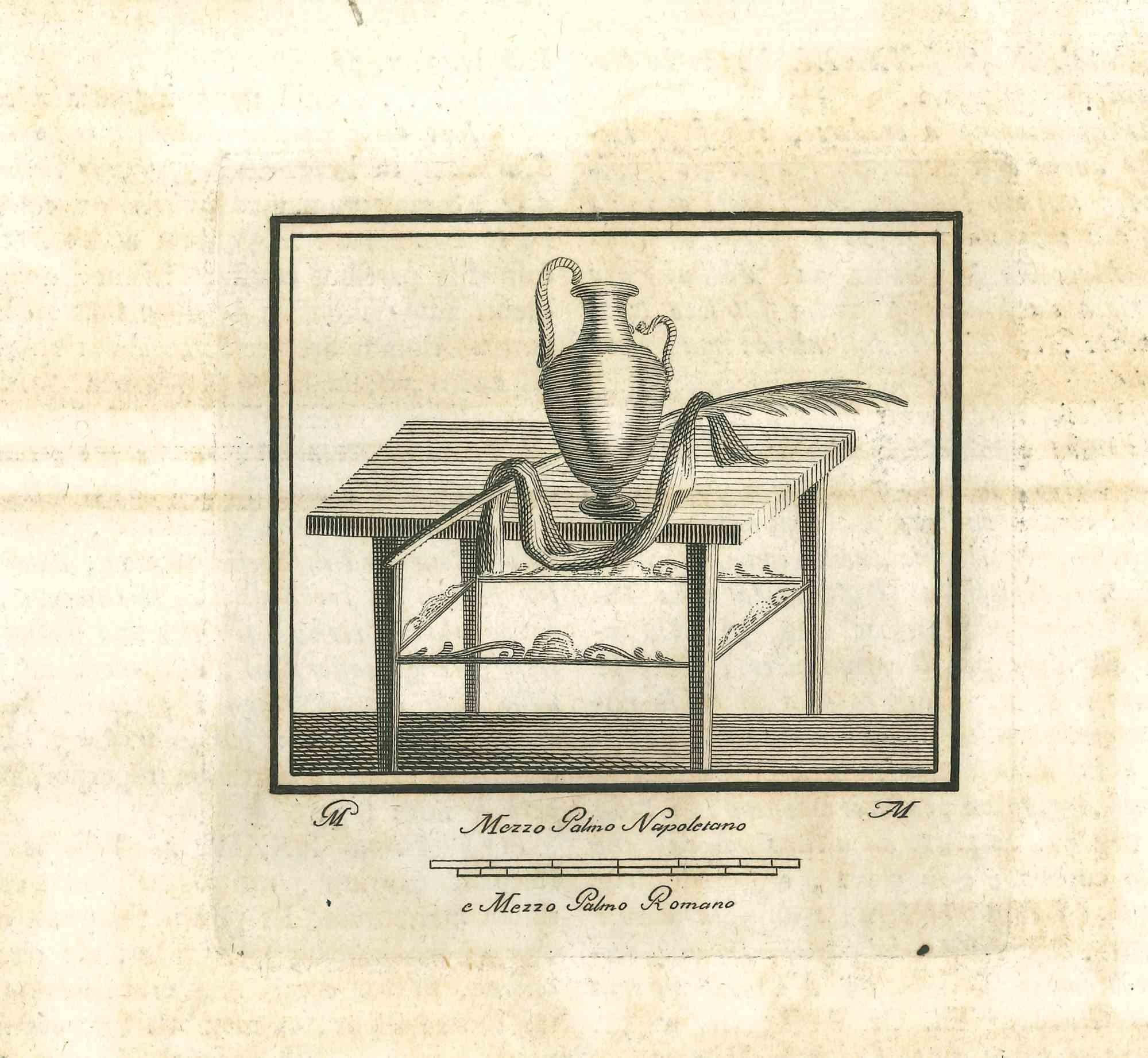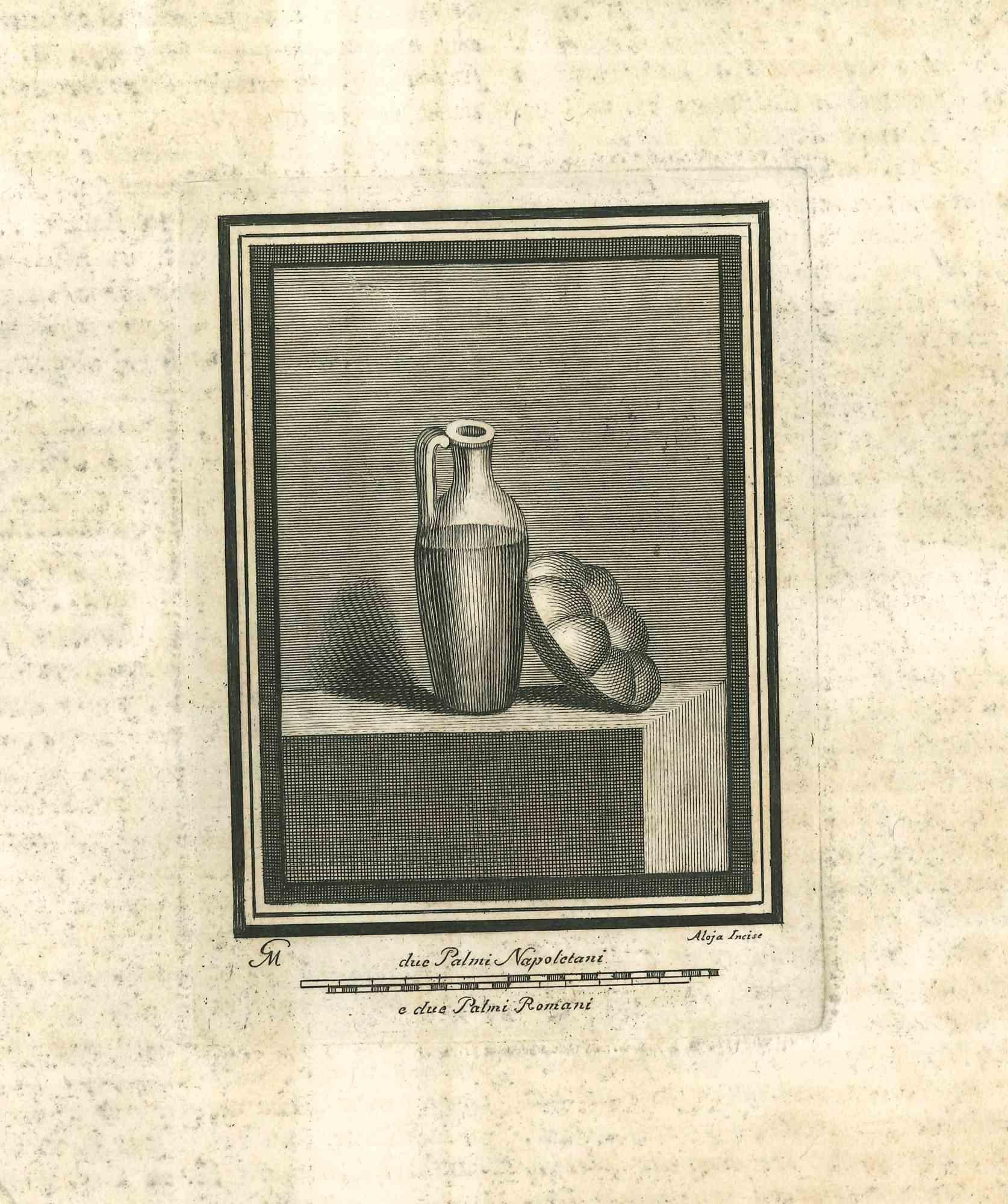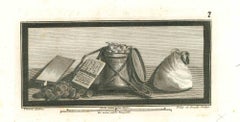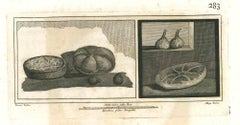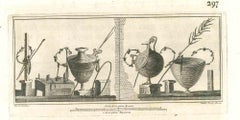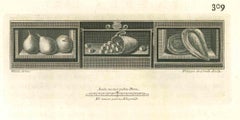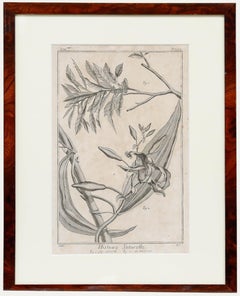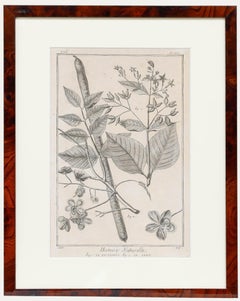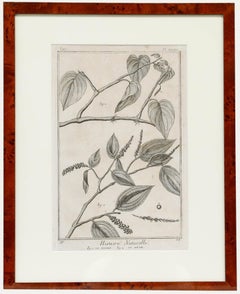Objekte ähnlich wie Antikes römisches Stillleben - Radierung von Vincenzo Aloja - 18. Jahrhundert
Möchten Sie mehr Bilder oder Videos?
Zusätzliche Bilder oder Videos von dem*der Anbieter*in anfordern
1 von 2
Vincenzo AlojaAntikes römisches Stillleben - Radierung von Vincenzo Aloja - 18. Jahrhundert18th Century
18th Century
460 €
Angaben zum Objekt
Ancient Roman Still Life, from the series "Antiquities of Herculaneum", is an original etching on paper realized by Filippo De Grado in the 18th century.
Signed on the plate on the lower right
Guter Zustand.
The etching belongs to the print suite “Antiquities of Herculaneum Exposed” (original title: “Le Antichità di Ercolano Esposte”), an eight-volume volume of engravings of the finds from the excavation of the ruins of Herculaneum in the Kingdom of Naples (now Campania, Italy).
It was published between 1757 and 1792 by the Regia Stamperia, and copies were delivered to selected recipients across Europe.
Despite the title, the Antiquity of Herculaneum shows objects from all the excavations undertaken by the Bourbons in the Gulf of Naples. These include Pompeii, Stabia and two sites of Herculaneum: Resina and Portici.
The Bourbon King Carlo appointed fifteen scholars creating a new “Herculaneum Academy” to study the artifacts and publish the results of the archaeological excavations of the sites.
The engravings are of high quality and the accompanying text shows a large scholarship.
They were realized by 25 prominent artists involved by the King to prepare drawings and engravings on the finds, among which we can find Giovanni Elia Morghen, Carlo Nolli, Luigi Vanvitelli and Giovanni Battista Casanova.
The “Antiquities” was designed more to amaze readers with the quality of the objects in the collection of the King of Naples than to be used in research., following and increasing the interest of 18th century society for the classical culture and Art in particular.
Through the exaltation of the classical concept of proportions and harmony, the book was of inspiration to the neoclassical movement in Europe, giving artists and decorators access to a huge shop of Hellenistic motifs.
Ref.:
National Gallery (Washington), Mark J. Millard Architectural, IV (2000), no. 1;
L. Garcia y Garcia, Nova bibliotheca pompeiana (2 v., 1998);
Royal Institute of British Architects, British Architectural Library ... Early printed books, 1 (1994), no. 112.
U. Pannuti, 'Incisori e disegnatori della Stamperia Reale di Napoli nel secolo XVIII: la pubblicazione delle Antichità di Ercolano', in Xenia antiqua, 9 (2000), p. 151-178;
V. Trombetta, 'L'edizione de Le Antichità di Ercolano esposte' in Rendiconti dell'Accademia di Archeologia, lettere e belle arti di Napoli , 59 (1984), p.151-172.
- Schöpfer*in:
- Entstehungsjahr:18th Century
- Maße:Höhe: 15 cm (5,91 in)Breite: 28 cm (11,03 in)Tiefe: 1 mm (0,04 in)
- Medium:
- Bewegung und Stil:
- Zeitalter:
- Rahmen:Rahmenoptionen verfügbar
- Zustand:Insurance may be requested by customers as additional service, contact us for more information.
- Galeriestandort:Roma, IT
- Referenznummer:Anbieter*in: T-1250241stDibs: LU65038982132
Anbieterinformationen
4,9
Platin-Anbieter*in
Premium-Anbieter*innen mit einer Bewertung über 4,7 und 24 Stunden Reaktionszeit
1stDibs-Anbieter*in seit 2017
7.709 Verkäufe auf 1stDibs
Typische Antwortzeit: 2 Stunde
- VersandAngebot wird abgerufen …Versand von: Monaco, Monaco
- Rückgabebedingungen
Einige Inhalte dieser Seite wurden automatisch übersetzt. Daher kann 1stDibs nicht die Richtigkeit der Übersetzungen garantieren. Englisch ist die Standardsprache dieser Website.
Authentizitätsgarantie
Im unwahrscheinlichen Fall eines Problems mit der Echtheit eines Objekts kontaktieren Sie uns bitte innerhalb von 1 Jahr für eine volle Rückerstattung. DetailsGeld-Zurück-Garantie
Wenn Ihr Objekt nicht der Beschreibung entspricht, beim Transport beschädigt wurde oder nicht ankommt, kontaktieren Sie uns bitte innerhalb von 7 Tagen für eine vollständige Rückerstattung. DetailsStornierung innerhalb von 24 Stunden
Sie können Ihren Kauf jederzeit innerhalb von 24 Stunden stornieren, ohne jegliche Gründe dafür angeben zu müssen.Geprüfte Anbieter*innen
Unsere Anbieter*innen unterliegen strengen Dienstleistungs- und Qualitätsstandards, wodurch wir die Seriosität unserer Angebote gewährleisten können.Preisgarantie
Wenn Sie feststellen, dass ein*e Anbieter*in dasselbe Objekt anderswo zu einem niedrigeren Preis anbietet, werden wir den Preis entsprechend anpassen.Zuverlässige weltweite Lieferung
Unsere erstklassigen Versandunternehmen bieten spezielle Versandoptionen weltweit, einschließlich individueller Lieferung.Mehr von diesem*dieser Anbieter*in
Alle anzeigenAntikes römisches Stillleben – Radierung von Filippo De Grado – 18. Jahrhundert
Von Filippo de Grado after Vanni
Antikes römisches Stilleben, aus der Serie "Antiquitäten von Herculaneum", ist eine Original-Radierung auf Papier von Filippo De Grado nach Vanni aus dem 18.
Signiert auf der Platte...
Kategorie
18. Jahrhundert, Moderne, Figurative Drucke
Materialien
Radierung
Antikes römisches Stillleben - Original-Radierung von Vincenzo Aloja - 18. Jahrhundert
Von Vincenzo Aloja
Antikes römisches Stilleben, aus der Serie "Altertümer von Herculaneum", ist eine Originalradierung auf Papier, die von Vincenzo Aloja nach Vanni im 18.
Signiert auf der Platte unte...
Kategorie
18. Jahrhundert, Alte Meister, Figurative Drucke
Materialien
Radierung
Antikes römisches Stillleben – Original-Radierung von Carlo Oraty – 18. Jahrhundert
Antikes römisches Stilleben, aus der Serie "Antiquitäten von Herculaneum", ist eine Originalradierung auf Papier von Carlo Oraty aus dem 18.
Signiert auf der Platte.
Gute Bedingung...
Kategorie
18. Jahrhundert, Moderne, Figurative Drucke
Materialien
Radierung
Antikes römisches Stillleben - Original-Radierung von Filippo De Grado - 18. Jahrhundert
Von Filippo de Grado
Antikes römisches Stilleben, aus der Serie "Antiquitäten von Herculaneum", ist eine Originalradierung auf Papier von Filippo De Grado aus dem 18.
Signiert auf der Platte.
Gute Bedi...
Kategorie
18. Jahrhundert, Alte Meister, Figurative Drucke
Materialien
Radierung
Antikes römisches Stillleben - Original-Radierung - 18. Jahrhundert
Antikes römisches Stilleben, aus der Serie "Antiquitäten von Herculaneum", ist eine Originalradierung auf Papier, die von verschiedenen Künstlern im 18.
Monogrammiert auf dem Teller...
Kategorie
18. Jahrhundert, Moderne, Figurative Drucke
Materialien
Radierung
Antikes römisches Stillleben - Original-Radierung von Vincenzo Aloja - 18. Jahrhundert
Von Vincenzo Aloja
Ancient Roman Still Life, from the series "Antiquities of Herculaneum", is an original etching on paper realized by Vincenzo Aloja in the 18th century.
Signed on the plate on the l...
Kategorie
18. Jahrhundert, Alte Meister, Figurative Drucke
Materialien
Radierung
Das könnte Ihnen auch gefallen
Robert Béenard (1734-1794) - Kupferstich aus dem 18. Jahrhundert, Le Cirier & Le Vanille
Gut präsentiert in einem einfachen Mahagoni-Rahmen und Creme montieren auf woven.
Kategorie
Frühes 18. Jahrhundert, Stilllebendrucke
Materialien
Gravur
Robert Béenard (1734-1794) - Kupferstich aus dem 18. Jahrhundert, Le Quinquina & La Casse
Gut präsentiert in einem einfachen Mahagoni-Rahmen und einer cremefarbenen Halterung. Auf wove.
Kategorie
Frühes 18. Jahrhundert, Stilllebendrucke
Materialien
Gravur
Robert Béenard (1734-1794) - Kupferstich aus dem 18. Jahrhundert, Le Pivre & Le Betel
Gut präsentiert in einem einfachen Mahagoni-Rahmen und einer cremefarbenen Halterung. Auf wove.
Kategorie
Frühes 18. Jahrhundert, Stilllebendrucke
Materialien
Gravur
Drei Gravuren klassischer italienischer Architekturelemente aus Bronze aus dem 19. Jahrhundert
Eine Gruppe von drei Stichen mit Darstellungen klassischer italienischer Architektur, die sich im Nationalmuseum von Neapel befinden, mit den Titeln "Bronze Hydria", "Marbre Naissanc...
Kategorie
1880er, Sonstige Kunststile, Stilllebendrucke
Materialien
Gravur
Old Engraving of Antiquities in einem Bett in Chalk, Winchester, England, 1789
Antiker Druck mit dem Titel "Antiquitäten in einem Kreidebett in der Nähe von Winchester gefunden, 1789". Antiker Druck, der in der Nähe von Winchester gefundene Altertümer darstellt...
Kategorie
Antik, 18. Jahrhundert, Drucke
Materialien
Papier
120 € Angebotspreis
20 % Rabatt
Antike römische Statuen im Vatikan: Eine Gruppe von drei Gravuren aus dem 18. Jahrhundert
Von Vincenzo Dolcibene
Eine Gruppe von drei antiken Stichen, die im Vatikan gefundene Statuen darstellen, darunter: "Pescatore" (Fischer), "Pastore" und "Istrione", "Gia nella Villa Mattei" (Gefunden in de...
Kategorie
1780er, Alte Meister, Stilllebendrucke
Materialien
Gravur
